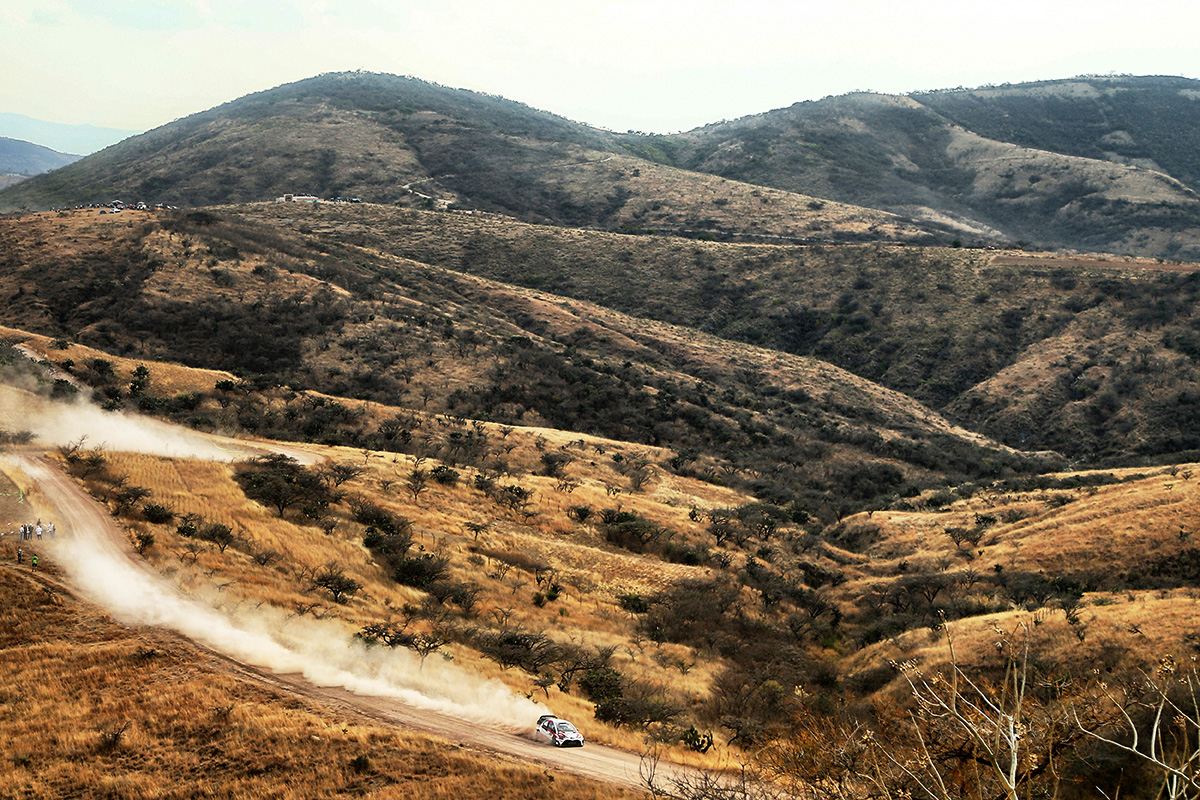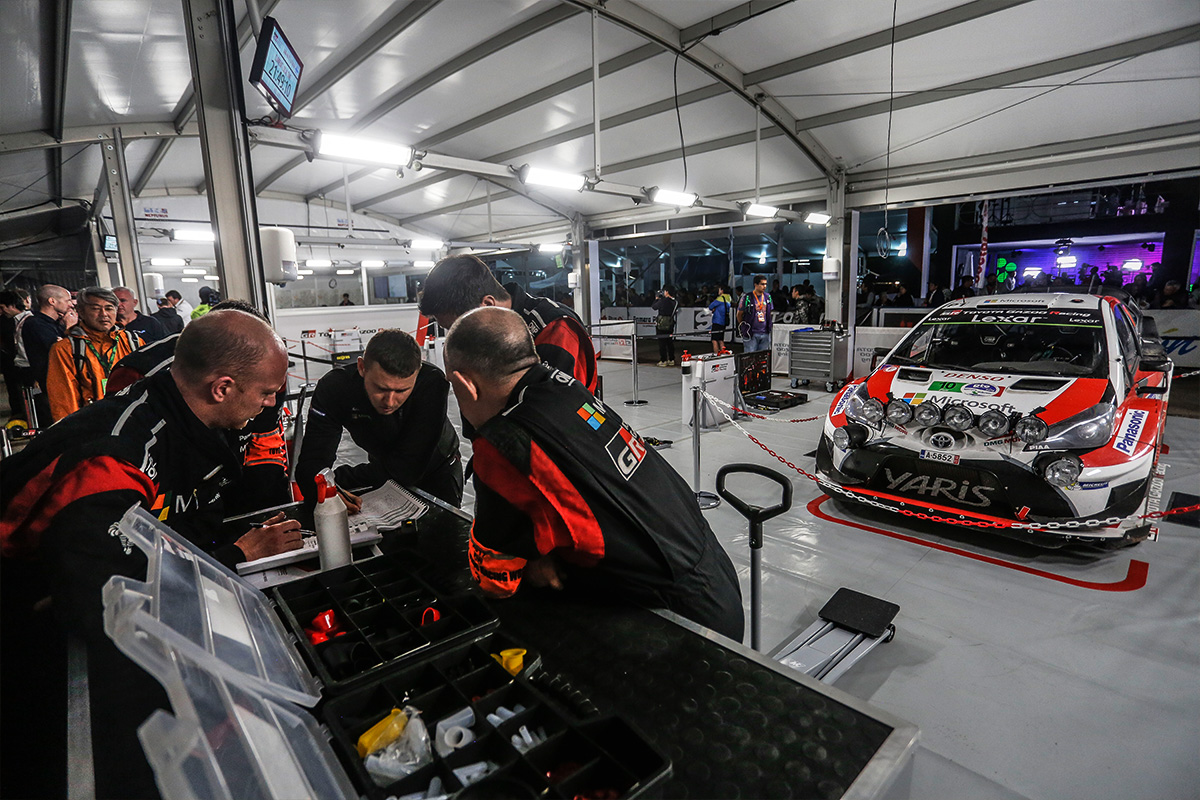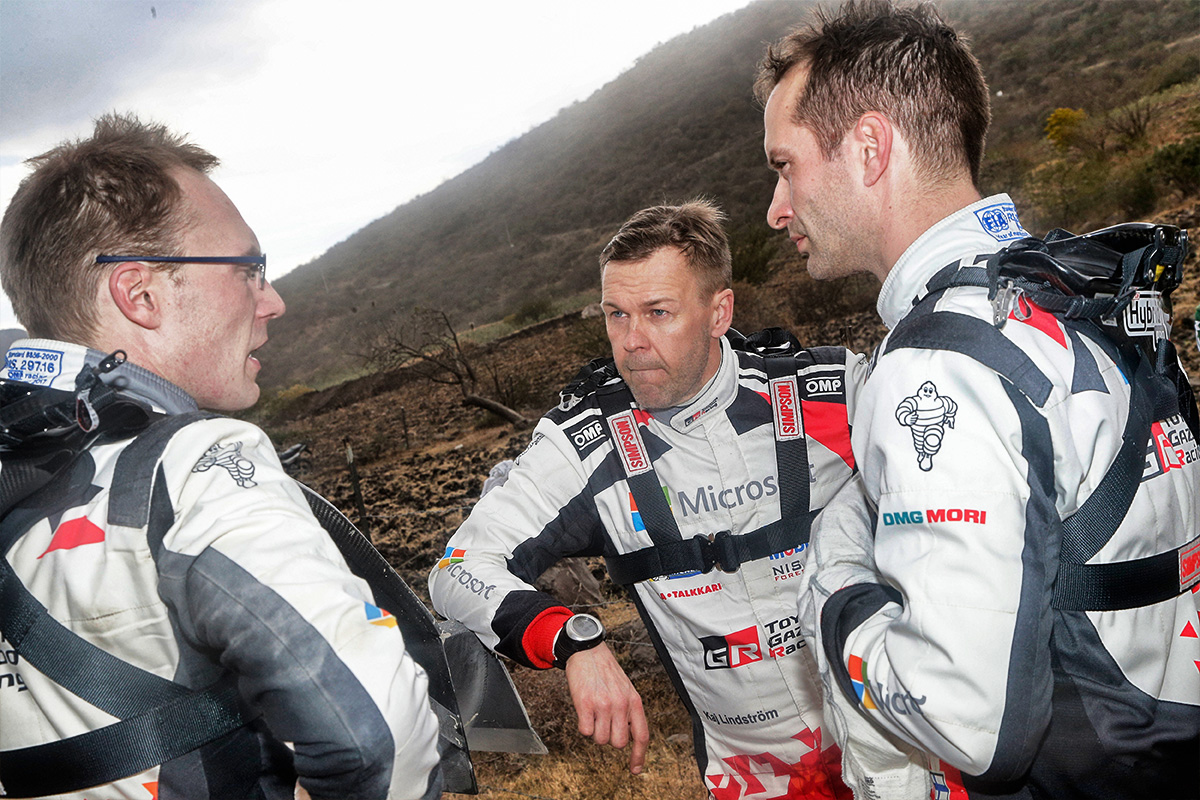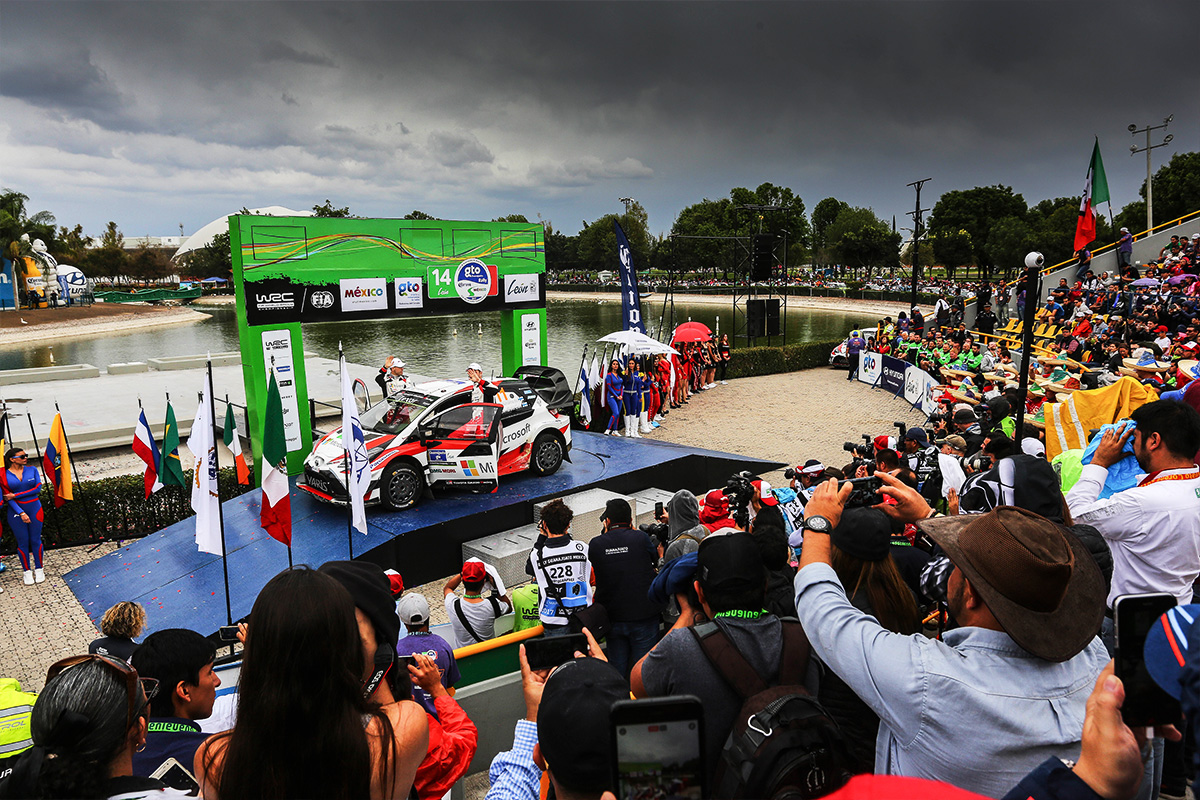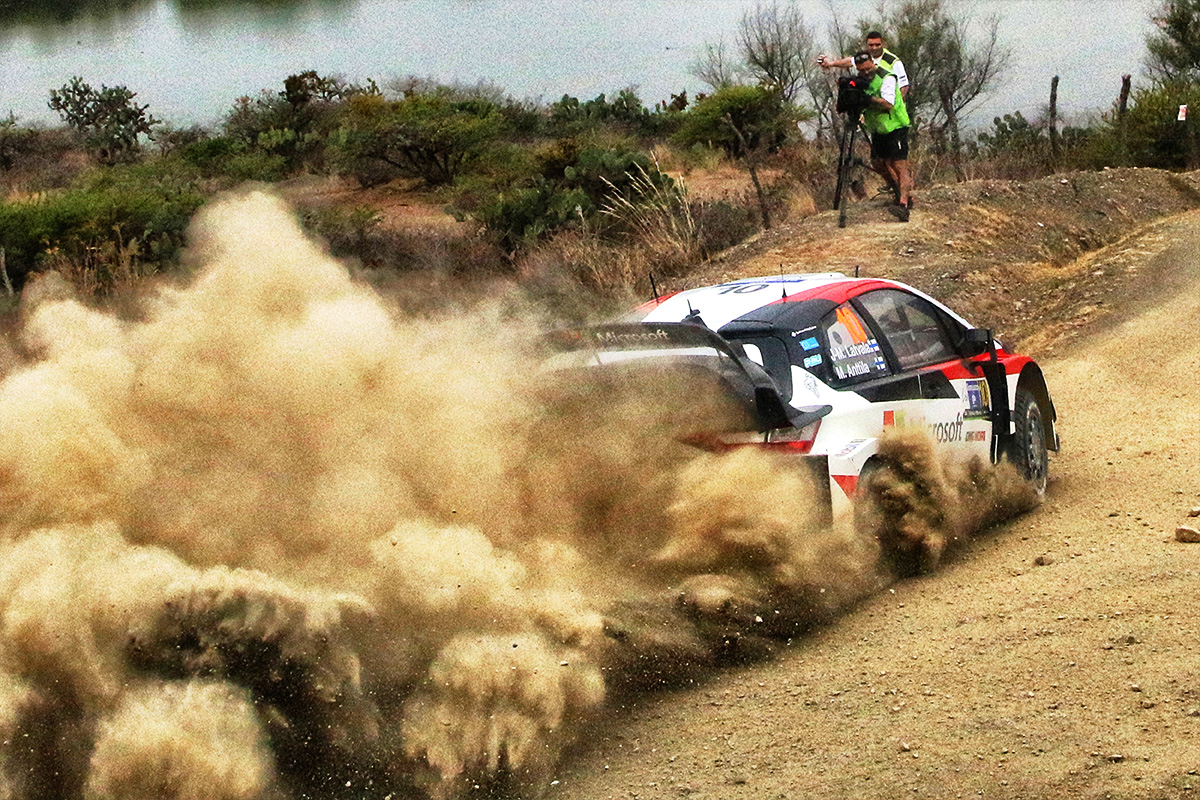Rally Mexico
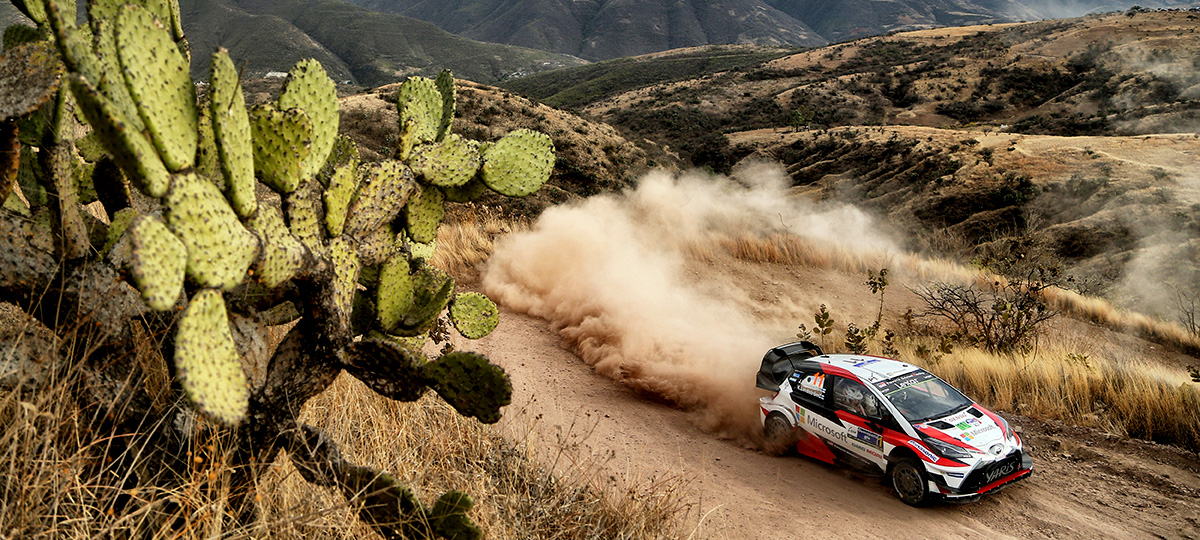
The toughest challenges given by the testing condition of Mexico’s infamous heat and thin air made the people and the car even stronger
Rally Mexico might be the toughest rally of the WRC. The Rally Mexico, which was staged by WRC for the first time in 2004, is based in León in Guanajuato state, in central Mexico. In March, when the WRC takes place, the daytimes are quite hot, with average maximum temperatures of approximately 28 degrees Celsius. The city of León is located at an altitude of 1815 meters, and the mountainous region where the special stages are held is at an altitude of over 2,000 meters, with the highest point being over 2,800 meters. At this altitude, oxygen density is around 70% of that at sea level, causing “breathing” difficulties for people and car engines alike. The challenges of the heat and thin air make Rally Mexico the biggest hurdle of the rally season for engine engineers.
Toyota, which returned to WRC from this season after 17 years, is the only manufacturer among the four with no prior experience in Rally Mexico. Consequently, it was not able to analyze past data for development purposes, which is why the team was prepared from the outset for the fact that it would probably be the most challenging rally. In order to compensate for the lack of experience through knowledge and ingenuity, since last year, the engineering team conducted tests for Mexico’s conditions. Tests were held in southern Europe for high temperature conditions, to confirm performance and endurance in temperatures far in excess of 30 degrees. In order to devise measures for high altitudes, testing took place in the mountains of Spain to optimize settings for thin air conditions. Of course, prior to that, ongoing tests were conducted on the test bench at Toyota Motorsport GmbH (TMG), the base for engine development, under conditions that reflected those at high altitudes, among other measures to ensure the best preparation possible for this first rally.
However, the high altitude tests in Spain met with unfavorable weather conditions, and unfortunately, it was not possible to hold tests in high temperature, high altitude conditions. This was the only point of concern for TOYOTA GAZOO Racing WRT, however, at Rally Mexico it proved to be the greatest challenge. On March 10, the second day of the contest, on the gravel course, which, at a total of 54.9 kilometers, is the rally’s longest, the two Yaris WRCs suffered from engine overheating. It therefore became necessary to switch the engine settings from “stage mode,” which is used for SS driving, to “road section mode,” with reduced performance and response for driving on regular roads, in order to avoid engine damage. Consequently, the drivers had to compete using lower performance engine settings than normal, which resulted in significantly time loss. However, it was not only the Yaris WRC which faced the heat problems, as the cars of other manufacturers had similar troubles. The Rally Mexico SS are extremely difficult courses, posing strategic challenges even for the most experienced teams.
By being able to collect actual driving data from Rally Mexico for the first time, the TOYOTA GAZOO Racing WRT engineers and mechanics were able to analyze the problems which occurred on the day and implement measures that night. They could undertake optimization work on both soft and hard aspects ready to compete the next day, the third day of the rally. As a result, the heat problem was resolved and they managed to improve the speed of the two Yaris WRC. Thereafter, there were no more significant problems, and car 10, driven by Jari-Matti Latvala/Miikka Anttila, and car 11, driven by Juho Hänninen/Kaj Lindström, both finished the rally. Through clever driving, Latvala was able to make up some time lost due to the problems, eventually finishing in sixth place. Meanwhile, Hänninen, who started in the lead position on day one, suffered from bad health throughout the rally, but avoided any major mishaps, driving all of the set SS for the first time this season, finishing seventh and earning the first single finish of the season. Rally Mexico saw significant advancements not only in the cars but also for the drivers.
TOYOTA GAZOO Racing WRT faced its first major challenges in Mexico, after previously achieving good results by finishing second in the season’s opening rally, and first in the second rally. However, precisely because they were able to complete this rally despite difficult conditions that exceeded expectations, they made great gains. Even in this region at an altitude of over 2,800 meters, the people use cars in their daily lives. In order to make the ideal car which can perform at the top of its functionality under any conditions, there is no motorsport like WRC in terms of the know-how gained. Facing and overcoming the difficulties is empowering. In competing in their first Rally Mexico, TOYOTA GAZOO Racing WRT learned many things, which they intend to put to good use in future rallies, and also to feedback for the manufacture of Toyota cars. In spite of the many difficulties of Rally Mexico, in fact it provided the biggest gains.
RESULT
| Pos | Driver | Co-Driver | Vehicle | Time |
|---|---|---|---|---|
| 1 | Kris Meeke | Paul Nagle | Citroen C3 WRC | 3h22m04.6s |
| 2 | Sébastien Ogier | Julien Ingrassia | Ford Fiesta WRC | +13.8s |
| 3 | Thierry Neuville | Nicolas Gilsoul | Hyundai i20 Coupe WRC | +59.7s |
| 4 | Ott Tanak | Martin Jarveoja | Ford Fiesta WRC | +2m18.3s |
| 5 | Hayden Paddon | John Kennard | Hyundai i20 Coupe WRC | +3m32.9s |
| 6 | Jari-Matti Latvala | Miikka Anttila | Toyota Yaris WRC | +4m40.3s |
| 7 | Juho Hänninen | Kaj Lindström | Toyota Yaris WRC | +5m06.2s |
| 8 | Dani Sordo | Marc Marti | Hyundai i20 Coupe WRC | +5m22.7s |
| 9 | Elfyn Evans | Daniel Barritt | Ford Fiesta WRC | +8m41.8s |
| 10 | Pontus Tidemand | Jonas Andersson | Skoda Fabia R5 | +10m51.9s |
